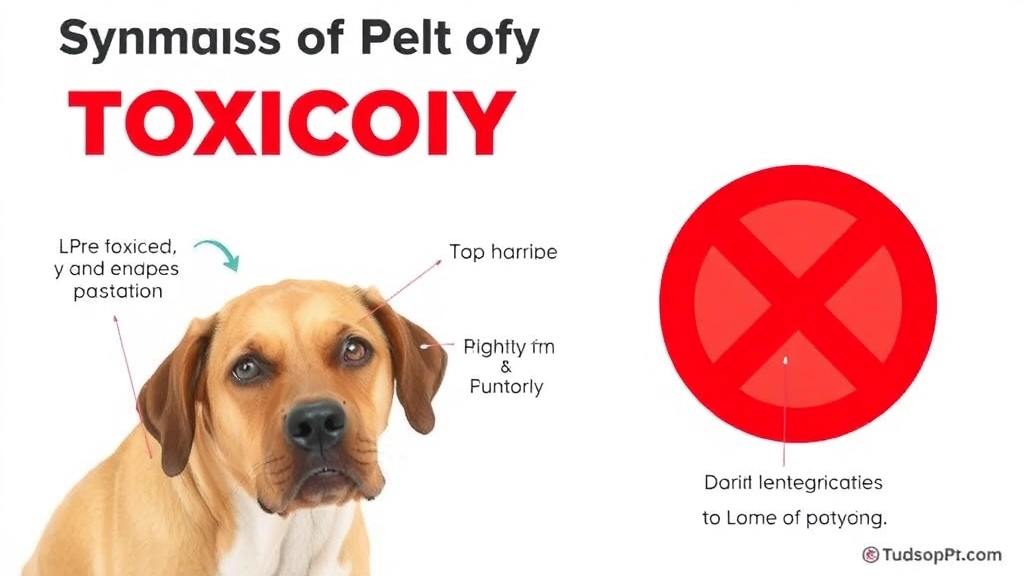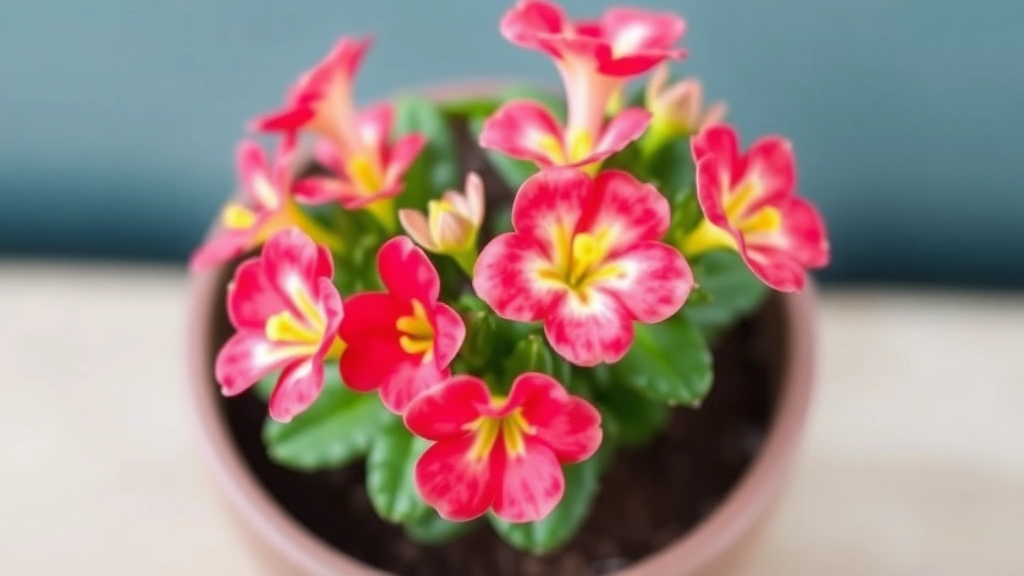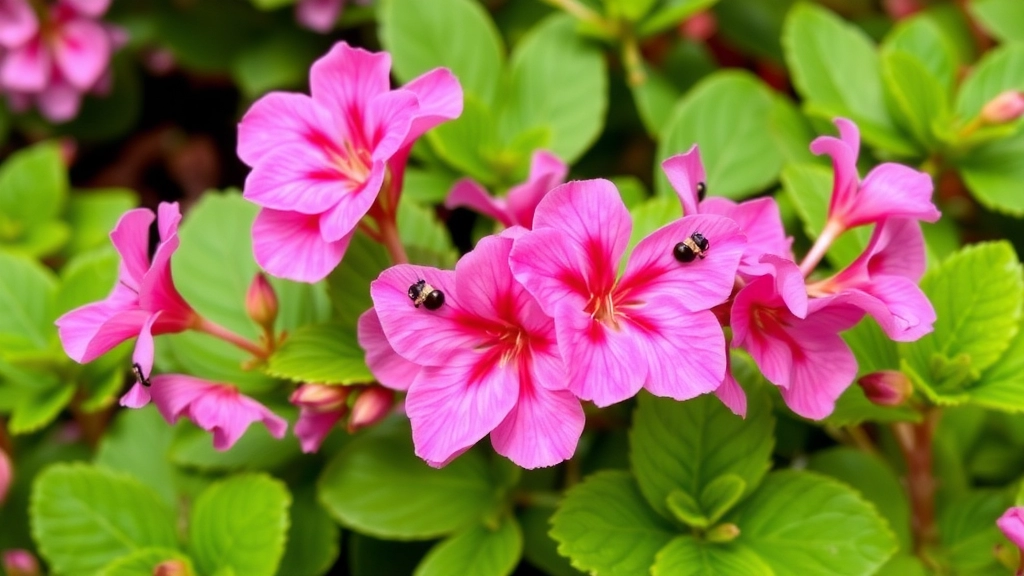Safety of Kalanchoe ‘Pink Butterflies’
If you’re wondering about the safety of Kalanchoe ‘Pink Butterflies’, especially around pets and kids, you’re not alone. This unique succulent, while beautiful, contains toxic compounds like cardiac glycosides. These can cause serious health issues if ingested, such as gastrointestinal distress and heart problems. Understanding the risks associated with this plant is crucial for keeping your loved ones safe.
Risks for Pets
Pets, particularly cats and dogs, are at risk if they nibble on Kalanchoe ‘Pink Butterflies’. Symptoms of poisoning can include:
- Vomiting
- Diarrhoea
- Lethargy
If you suspect your pet has ingested any part of this plant, it’s essential to seek veterinary care immediately. Knowing the dangers and taking preventive measures can help you enjoy your Kalanchoe safely.
If you’re a pet owner, you might be wondering about the safety of Kalanchoe ‘Pink Butterflies’ in your home.
This beautiful succulent, while visually appealing, contains several toxic components that can pose serious risks to both pets and humans.
Key Toxic Components:
– **Cardiac Glycosides:** These compounds are the primary toxins found in Kalanchoe. They can disrupt heart function, leading to serious health issues.
– **Bufadienolides:** Another class of compounds that can affect the heart and cause gastrointestinal distress.
– **Saponins:** Present in various plants, saponins can lead to irritation in the digestive tract.
The ingestion of any part of the Kalanchoe plant can lead to toxicity. For more details on how to safely grow this plant, check out the [complete guide to growing and caring for Kalanchoe Pink Butterflies](https://planthq.org/complete-guide-to-growing-and-caring-for-kalanchoe-pink-butterflies/).
Additionally, if you’re interested in other varieties, you might want to read about the [care tips for Kalanchoe succulents with pink flowers](https://planthq.org/care-tips-for-kalanchoe-succulent-with-pink-flowers/).
Symptoms of Toxicity in Pets and Humans

So, you’ve got a Kalanchoe ‘Pink Butterflies’ at home, and you’re wondering, “What if my pet nibbles on it?”
Well, it’s a valid concern.
Both pets and humans can experience symptoms of toxicity from this beautiful plant.
Symptoms in Pets
If your furry friend decides to take a bite, keep an eye out for these signs:
- Vomiting: This is often the first sign your pet has ingested something harmful.
- Diarrhoea: Loose stools can indicate distress in the digestive system.
- Lethargy: If your pet seems unusually tired or less active, it could be a red flag.
- Loss of Appetite: A sudden disinterest in food can signal something’s not right.
- Abdominal Pain: Watch for signs like whining or sensitivity when you touch their belly.
Symptoms in Humans
And it’s not just our pets who might be affected. If a human ingests Kalanchoe, look out for:
- Nausea and Vomiting: Just like in pets, this is a common reaction.
- Diarrhoea: Your body’s way of flushing out toxins.
- Dizziness or Weakness: Feeling off balance or unusually tired is concerning.
- Skin Irritation: Some people might experience rashes or irritation upon contact.
What to Do Next
If you spot any of these symptoms in your pet or yourself, it’s crucial to act fast.
If you suspect that your pet or a human has ingested Kalanchoe âPink Butterflies’, it’s crucial to act swiftly. The toxicity of this plant can lead to serious health issues, and knowing what to do can make a significant difference.
### What Should You Do Immediately?
1. **Stay Calm**: Panic can cloud your judgment. Take a deep breath and assess the situation.
2. **Identify the Ingestion**: Determine how much of the plant was consumed and when. This information will be vital for medical professionals.
3. **Contact a Veterinarian or Poison Control**:
– For pets, reach out to your local veterinarian or an animal poison control hotline.
– For humans, contact your local poison control centre or seek immediate medical attention.
4. **Do Not Induce Vomiting**: Unless directed by a professional, do not attempt to make the individual vomit. This could cause further harm.
5. **Gather Information**:
– Take note of the symptoms observed.
– Collect any plant material for identification.
6. **Monitor Symptoms**: Keep a close watch for symptoms such as vomiting, lethargy, or changes in behaviour. Document these changes as they can provide valuable information to healthcare providers.
7. **Prepare for Transport**: If advised to seek medical help, be ready to transport the affected individual promptly.
Taking these immediate actions can significantly impact the outcome of an ingestion incident. For more information on how to care for Kalanchoe plants safely, you might find the [Kalanchoe Tomentosa Toxicity Guide](https://planthq.org/kalanchoe-tomentosa-toxicity-protect-your-pets-from-poisoning/) helpful. Additionally, understanding the [Health Benefits of Kalanchoe Pinnata Juice](https://planthq.org/health-benefits-of-kalanchoe-pinnata-juice/) can provide insights into the positive uses of these plants.
Is Kalanchoe Safe for Indoor Plants with Pets?

As pet owners, we often find ourselves asking whether our beloved indoor plants pose any risk to our furry companions.
Kalanchoe ‘Pink Butterflies’ is a visually stunning addition to any home, but it’s essential to consider its safety for pets.
- Toxicity Level: Kalanchoe contains compounds that are toxic to pets, particularly cats and dogs. Ingesting even a small amount can lead to serious health issues.
- Symptoms to Watch For: If your pet nibbles on this plant, watch for symptoms like vomiting, diarrhoea, or lethargy. These signs can indicate that they are experiencing toxicity.
- Placement Matters: If you choose to keep Kalanchoe indoors, consider placing it in areas that are out of reach of your pets. High shelves or hanging planters can help mitigate the risk.
- Supervision is Key: Always supervise your pets around houseplants. Even if a plant is considered safe, it’s better to be cautious.
- Educate Your Household: Make sure everyone in your home is aware of the potential dangers of Kalanchoe and understands the importance of keeping it away from pets.
In summary, while Kalanchoe can add beauty to your indoor space, it poses risks to pets that should not be overlooked.
Preventive Measures When Growing Kalanchoe
As we delve deeper into the responsible care of Kalanchoe âPink Butterflies’, it’s essential to consider preventive measures that can help safeguard both your pets and your indoor environment.
Understanding the Risks
Kalanchoe plants are beautiful but can pose risks to pets and humans alike due to their toxic components. Here are some practical steps to mitigate these risks:
- Placement Matters: Position Kalanchoe in areas that are out of reach of pets. High shelves or hanging pots can be effective solutions.
- Educate Household Members: Make sure everyone in your home understands the potential dangers of Kalanchoe. Awareness can prevent accidental ingestion.
- Create a Barrier: Consider using decorative plant stands or terrariums that are pet-proof, ensuring your furry friends can’t access the plants.
- Regular Monitoring: Keep an eye on your plants and pets. If you notice your pet showing unusual interest in the Kalanchoe, it may be time to rethink its placement.
- Choose Non-Toxic Varieties: If you’re concerned about toxicity, research and opt for pet-safe plants. This can provide peace of mind while still enhancing your indoor space.
By implementing these preventive measures, you can enjoy the beauty of Kalanchoe while keeping your pets safe. For more detailed care instructions, you can refer to our expert tips on caring for Kalanchoe succulents and our guide on Kalanchoe care, propagation, and safety.
Safe Alternatives to Kalanchoe for Pet Owners
So, you’re worried about Kalanchoe âPink Butterflies’ and its toxicity to your furry friends.
Let’s explore some fabulous alternatives that won’t put your pets at risk but will still beautify your space.
FAQs about Kalanchoe ‘Pink Butterflies’ and Toxicity
What symptoms should I look for if my pet ingests Kalanchoe ‘Pink Butterflies’?
If your pet ingests Kalanchoe ‘Pink Butterflies’, watch for the following symptoms:
- Vomiting
- Diarrhoea
- Lethargy
- Loss of Appetite
- Abdominal Pain
Are humans also at risk of toxicity from Kalanchoe ‘Pink Butterflies’?
Yes, humans can also experience toxicity if they ingest Kalanchoe ‘Pink Butterflies’. Symptoms may include:
- Nausea and Vomiting
- Diarrhoea
- Dizziness or Weakness
- Skin Irritation
What should I do if my pet or I show symptoms of toxicity?
If you or your pet exhibit any symptoms of toxicity, it is crucial to act quickly. Seek medical attention or consult a veterinarian immediately.
Is Kalanchoe ‘Pink Butterflies’ safe to keep indoors if I have pets?
While Kalanchoe ‘Pink Butterflies’ is a beautiful indoor plant, it is not safe for homes with pets. The plant contains compounds that are toxic to pets, especially cats and dogs.
How can I keep Kalanchoe ‘Pink Butterflies’ out of reach of my pets?
Consider placing the plant in areas that are inaccessible to pets, such as high shelves or hanging planters. Always supervise your pets around houseplants to ensure their safety.
What precautions should I take if I decide to keep Kalanchoe ‘Pink Butterflies’ at home?
If you decide to keep this plant, make sure everyone in your household is aware of its potential dangers. Educate them about the importance of keeping the plant away from pets.
References
-
ASPCA: Toxic and Non-Toxic Plants – Kalanchoe
-
Pet Poison Helpline: Kalanchoe
-
Gardener’s World: How to Grow Kalanchoe
